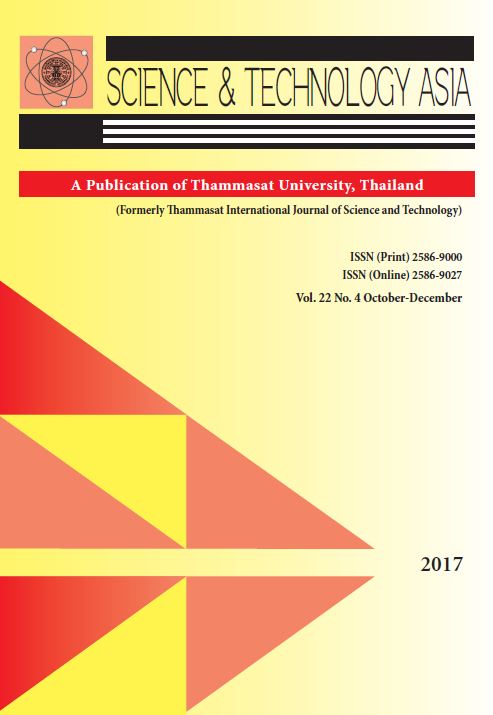The Development of Coconut-Based Activated Carbon Impregnation to Adsorb Mixture of Organic and Inorganic Gases
Keywords:
Activated carbon, Impregnation, Adsorption, Organic gases, Inorganic gases, Adsorption capacityAbstract
Activated carbons have been the most widely used adsorbent in adsorption system. This study aims to develop the coconut-based activated carbon to treat both organic and inorganic contaminants in polluted air. The proper chemical treatment was selected: nitric acid (HNO3), sodium hydroxide (NaOH) and ammonium nitrate (NH4NO3). For each chemical, varying concentrations of 0.1, 0.5, 1.0, 2.0, 3.0, 4.0 and 5.0 N were used. In a treatment, the activated carbon was soaked and stirred for 8 hours at 70 C in the solution and heated at 105 C for 12 hours and then cooled down in a desiccator for 12 hours. This impregnated activated carbon was observed for the surface characteristics using scanning electron microscope (SEM), analyzed for iodine number and analyzed for amount of functional groups on the surface. The suitable chemical treatment was selected by considering surface characteristics, porosity and chemical property. The adsorption capacity of the impregnated activated carbon was tested and compared with that of the original activated carbon. The treatment with 1.0 N sodium hydroxide (NaOH) appeared to be the most appropriate technique to impregnate for the coconut-based activated carbon to adsorb mixture of organic and inorganic gases. The physical adsorption ability for benzene was reduced by 55.90 percent, while, the chemical adsorption ability for hydrogen sulfide increased by 537.61 percent.








